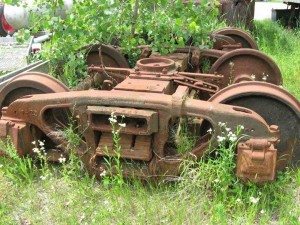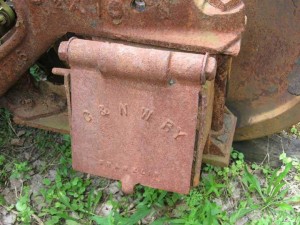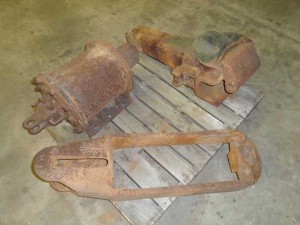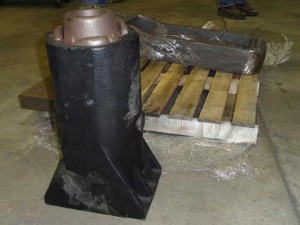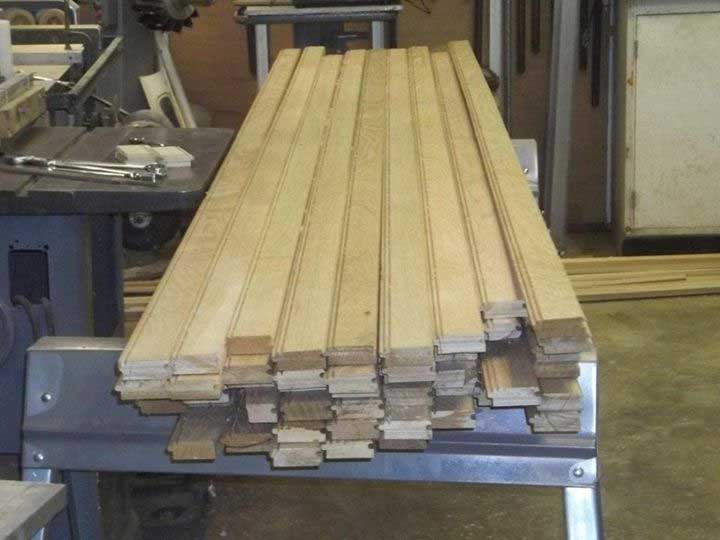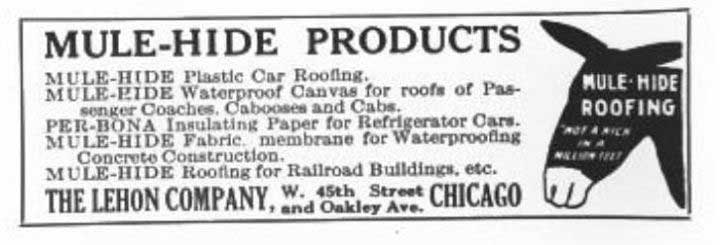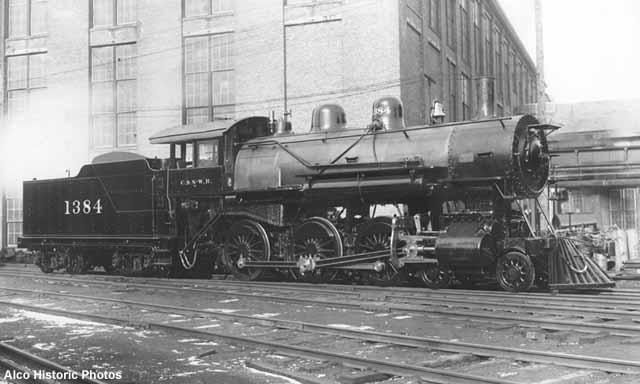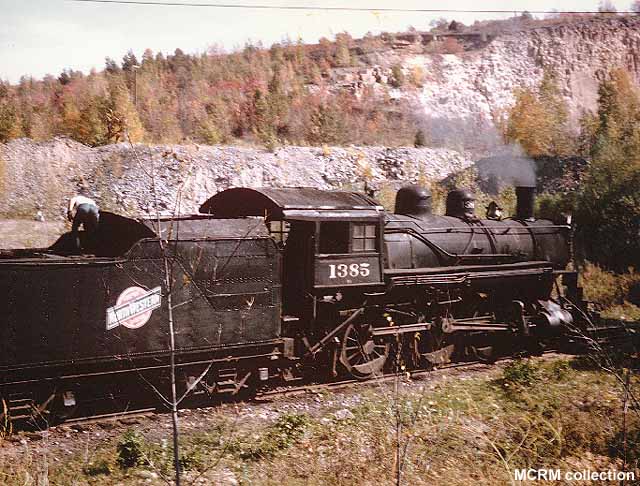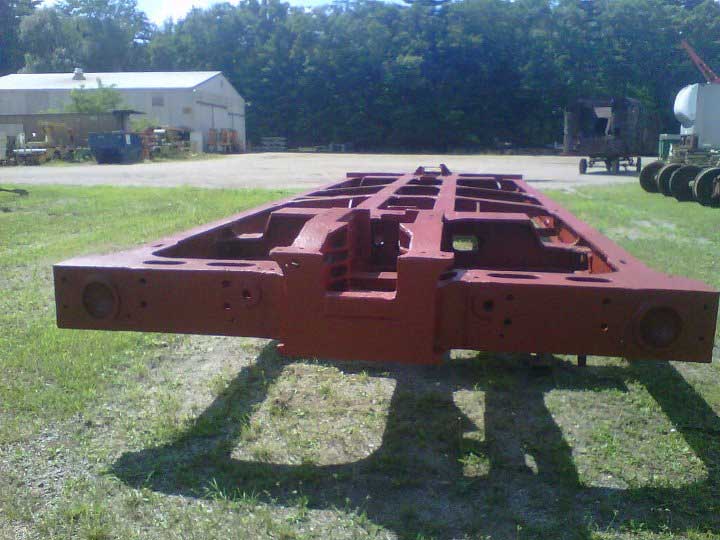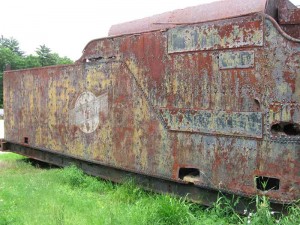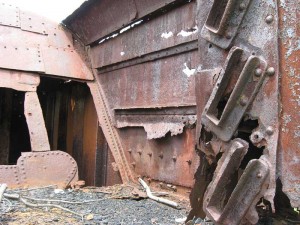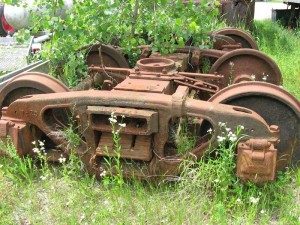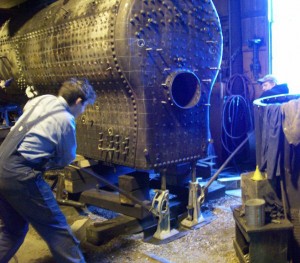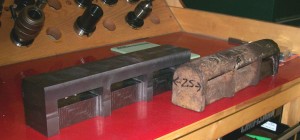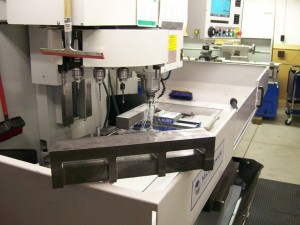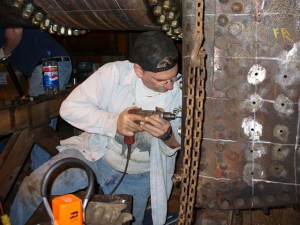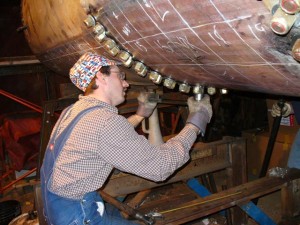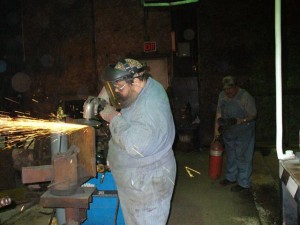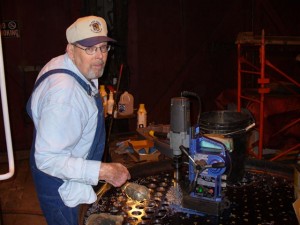Today is the locomotive’s 106th birthday so we are celebrating with a restoration update!
The R-1’s tender tank is complete and ready for paint. The gallery below shows the construction of the new tender tank.
The frame is also done and is in primer paint. In mid-February 2013, Mid-Continent volunteer Jim Connor delivered the deck tender boards to DRM Industries.
One item of debate had been over whether to attempt to salvage the trucks. The trucks had largely sat idle with the tender since 1973 when the tender from steam pile driver X263579 was substituted for use with the 1385. Most people’s image of the appearance of the 1385 tender is actually the X263579. The old tender was stored at end of track for nearly 30 years at Quartzite Lake where it eventually became buried in mud and debris caused by flash flooding in 1993. The trucks remained largely buried until the tender’s rescue in April 2002 [see December 2011 issue of Mid-Continent Railway Gazette for the rescue story]. With guidance from Steve Sandberg, new project consultant, it was determined that seeking “new” used trucks during the current restoration was a better option.
- Tender trucks dug out of the mud and rock in 2002. The decision was recently made to find replacements.
- Detail of old tender truck journal box. Being buried in mud for nine years was not kind to them.
- Detail of old tender truck journal box.
Two used serviceable trucks were purchased in mid-February 2013. They had previously been used on a freight car. One truck had all four casting marks and the other had three. This tells us how many times the trucks have been rebuilt. When all four casting marks are removed, the truck is scrap. The wheels will be pressed off and new ones pressed on.
The draft gear resides inside the coupler assembly of the tender to help dissipate the shock of coupling into a string of cars or trying to start them. It also helps smooth out the forces through the coupler as when going down the track. In late 2012, Mid-Continent was seeking a replacement for the tender’s draft gear. As it would turn out, Miner, the manufacturer of the original draft gear used on the tender, was seeking old draft gears for their corporate museum. The draft gear found on the 1385’s tender was a model which they lacked in their collection. Discussions between the Steam Task Force and Miner led to a trade arrangement in which Miner supplied a more modern style draft gear in trade for the old one.
- Brake cylinder, coupler and yoke removed from the C&NW 1385 tender, ready to be sent to Miner to appear in their museum.
- The cylindrical device is the new draft gear. It contains a friction clutch and extremely heavy duty springs to absorb impact in either direction and even out the pulling and braking forces.
The plan is to finish the tender and move it to North Freedom for display. This will offer a visible sign of progress on the project. With most ongoing work either taking place off-site or being of the engineering and design variety, there has been little thus far for visitors to Mid-Continent to actually see.
As for non-tender developments, the Steam Task Force is continuing to work on boiler engineering with nothing specific to report at this time. Meanwhile, work on the cab has picked up. Boards have been milled for the cab roof. Investigations are also taking place into finding a suitable replacement for the original Lehon Mule Hide covering for the cab roof.
- Milled boards for the cab roof. Photo courtesy Jim Hackbarth.
- Lehon Mule Hide advertisement from 1915. Source: Railway Age Gazette, Vol. 59.
As for overall project status, there is still much work to do. The biggest cost area, the boiler, still lies before us. Work is also yet to begin on the running gear. Roughly 70% of the Wagner Foundation’s $250,000 challenge grant has now been met by matching donations since the challenge began in June 2011. Despite this progress, the project will still require roughly $1 million in additional donations in order to cover the estimated total cost for the project. That is why YOUR help is needed. The sooner we are able to meet this fundraising challenge, the sooner everyone will be able to enjoy seeing 1385 under steam. Anyone wishing to make a gift to the 1385 restoration can do so directly on our donation webpage or can find instructions there for how to mail your donation. Finally, THANK YOU to everyone who has already donated! We couldn’t have gotten this far without your help!

